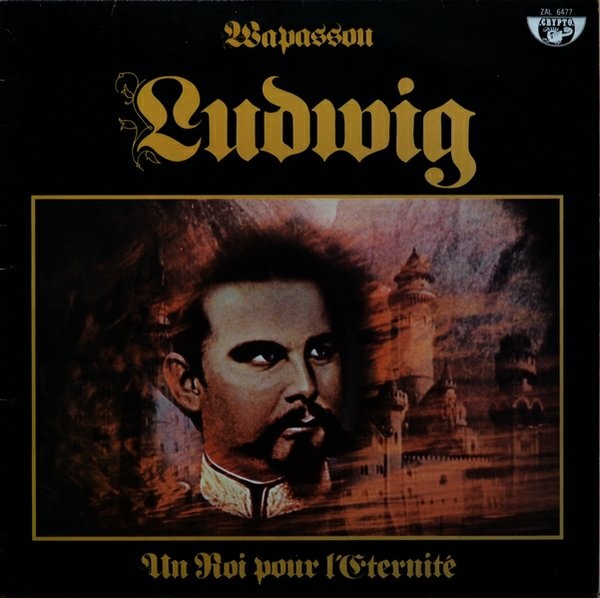
Exposé Online
What's old
Exposé print issues (1993-2011)
- 1 (October 1993)
- 2 (February 1994)
- 3 (May 1994)
- 4 (August 1994)
- 5 (October 1994)
- 6 (March 1995)
- 7 (July 1995)
- 8 (November 1995)
- 9 (March 1996)
- 10 (August 1996)
- 11 (February 1997)
- 12 (May 1997)
- 13 (October 1997)
- 14 (February 1998)
- 15 (July 1998)
- 16 (January 1999)
- 17 (April 1999)
- 18 (November 1999)
- 19 (May 2000)
- 20 (October 2000)
- 21 (March 2001)
- 22 (July 2001)
- 23 (December 2001)
- 24 (April 2002)
- 25 (September 2002)
- 26 (February 2003)
- 27 (August 2003)
- 28 (December 2003)
- 29 (April 2004)
- 30 (September 2004)
- 31 (March 2005)
- 32 (September 2005)
- 33 (May 2006)
- 34 (March 2007)
- 35 (January 2008)
- 36 (October 2008)
- 37 (July 2009)
- 38 (July 2010)
- 39 (Summer 2011)
Reviews
Wapassou — Ludwig (Un Roi pour L'Eternité)
(Musea FGBG 4113.AR, 1978/1994, CD)
Wapassou — Messe en Ré Mineur
(Musea FGBG 4111.AR, 1976/1994, CD)
Wapassou — Salammbô
(Musea FGBG 4112.AR, 1977/1994, CD)



Wapassou was a unique classically influenced French band that existed from around 1971 through the mid-80s (their last release was in 1986). These three — their second, third and fourth albums respectively — represent what is generally accepted as the band's finest material. Their sound could be described as a gentle and perhaps understated symphonic rock, rich with color and cultural influences, elaborate and animated. The lineup consisted of Freddy Brua (bandleader and keyboards), Karin Nickerl (guitars), and Jacques Lichti (violin), plus guests on vocals. Fernand and Gisele Landmann (lights and sound, respectively) were also considered part of the lineup. No drums, no bass. This gave the band its unique character, which could in some terms be likened to Art Zoyd, but with a brighter and more colorful outlook, less angular and more flowing. Messe en Ré Mineur (Mass in D minor) is the most highly regarded of the three, containing one long forty-minute piece (for those who owned the LP version, the two sides have been properly joined) winding through many different themes and melodic developments, with ethereal vocals by Eurydice (no lyrics). It is at once delicate and stunning, a masterpiece of shimmering beauty.
With Salammbô, named for the heroine in the Flaubert novel, Wapassou move boldly forward based on the timeless theme of the stupidity of war. This one features an opening narration, galloping horses, some lyrics (in French) and vocals by Monique Fizelson. Musically, it's a step in a more assertive, less ethereal direction, and again consists essentially of one long suite in two parts, this time split at the sides (there was no fade-out / fade-in on the original LP ).
Ludwig, as might be expected, is the more overtly classically influenced of the three, and uses synthesizers to a greater degree than the previous two, as well as plenty of organs and keyboard bass, and vocals by Véronique Nickerl. Mostly consisting of one long piece "Un Roi pour Eternité" (now fused into one continuous 34 minute track), it also features a short cover of Wagner's "Lac de Starnberg," a shorter track, "L'Adieu du Roi," which features Marc Dolisi guesting on ARP synthesizer, and for good measure Musea has even included a bonus track, the six-minute "Hymne au Nouveau Romanticisme." Three great discs, all highly recommended, although folks addicted to the steady beat of rock drums might be advised to proceed with caution.
by Peter Thelen, Published 1994-10-01
Originally recorded in July 1976 Messe en ré mineur is one of the best psychedelic / progressive releases of all time. This unsurpassed musical tour de force consists of one long song that constantly shifts and changes throughout its 40 minute life span. The music harkens back to the even more ancient music’s of Pink Floyd’s "Interstellar Overdrive" and Tangerine Dream’s cosmic freak-out "Ultima Thule." The interplay of Freddy Brua’s keyboards, Karin Nickerl’s guitar, Jacques Lichti’s violin, and Eurydice’s wordless chanting is exciting and innovative even by today’s standards. This reissue is a must for the adventurous music collector and listener alike. Musea faithfully reproduced the original album art on both the booklet and CD. Unfortunately, if you can’t read French you will be at a total loss regarding the liner notes and band history.
by Henry Schneider, Published 2016-04-04
Filed under: Reissues, Issue 5, 1994 releases, 1978 recordings, 1976 recordings, 1977 recordings
Related artist(s): Wapassou
What's new
These are the most recent changes made to artists, releases, and articles.
- Review: Sacri Monti - Retrieval
Published 2026-01-07 - Release: Dirk Serries - Zonal Disturbances III
Updated 2026-01-06 00:53:05 - Release: Dirk Serries - Infinite and Unbound
Updated 2026-01-06 00:49:31 - Review: Son Reis Project - Payment Plan
Published 2026-01-06 - Review: Hadal Sherpa - Memoria
Published 2026-01-05 - Release: Master Cylinder - Elsewhere
Updated 2026-01-04 22:25:48 - Artist: Master Cylinder
Updated 2026-01-04 22:23:41 - Review: The Shirts - Live
Published 2026-01-04 - Release: Dieter Spears / Brian Paris / Gray Lagere - Speris
Updated 2026-01-03 23:43:51 - Review: Markus Reuter / Stefano Castagna - Sea of Hopeless Angels & Sky on the Ground
Published 2026-01-03 - Listen and discover: They're schizo, they're fun, and they're dreaming
Published 2026-01-02 - Review: Zabrahana - Whales Dream in Purple
Published 2026-01-02 - Review: McLuhan - Anomaly
Published 2026-01-01 - Review: Ektör - Ektöristan
Published 2025-12-31 - Release: Chatte Royal - Mick Torres Plays Too F***ing Loud
Updated 2025-12-30 15:33:15 - Artist: Chatte Royal
Updated 2025-12-30 15:32:15 - Release: Olly Chalk - In Those Remote Stars
Updated 2025-12-30 14:01:10 - Artist: Olly Chalk
Updated 2025-12-30 13:59:56 - Review: Pietro Zollo - The Future Is Now
Published 2025-12-30
